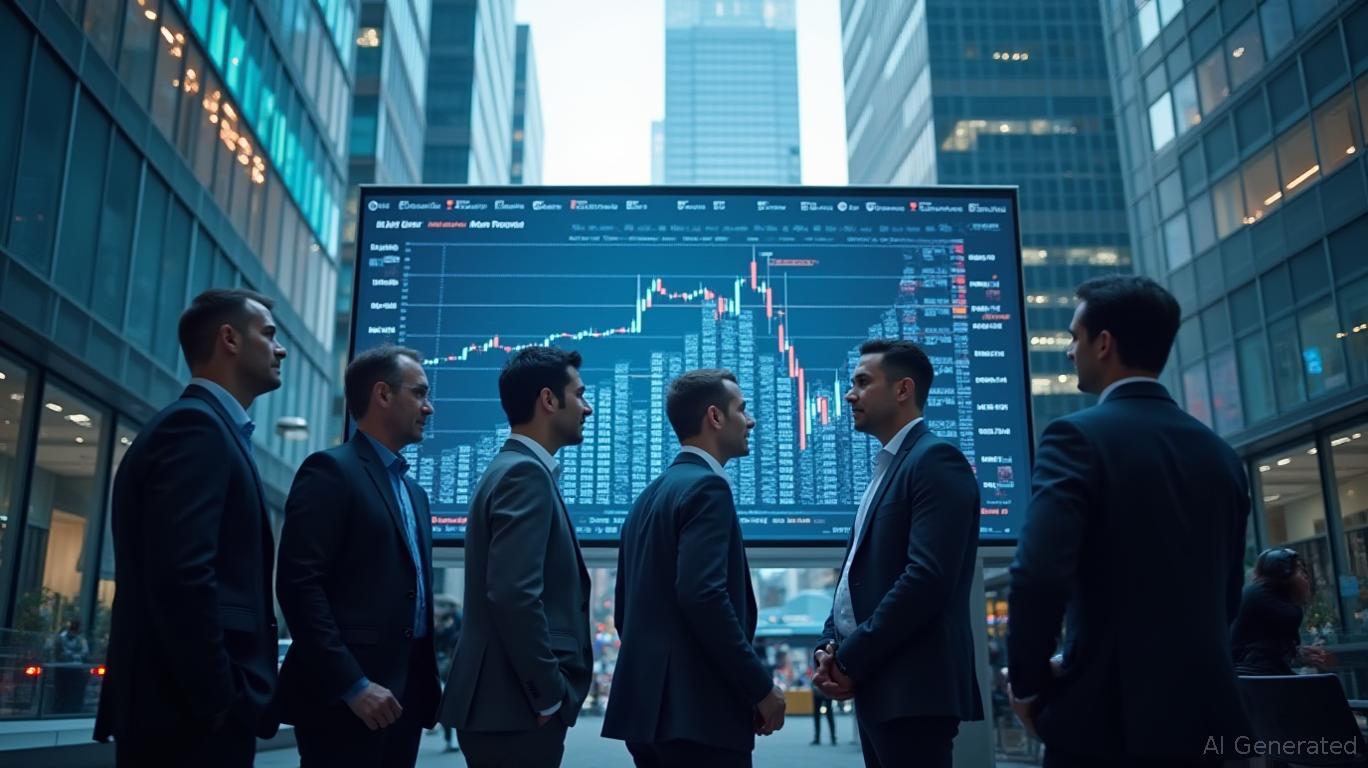Gold’s Surge Depends on Geopolitical Tensions Versus Hopes for Trade
- Spot gold rose to $3,980/oz on Oct 28, 2025, rebounding from prior losses amid shifting geopolitical risks and divergent analyst forecasts. - India's RBI boosted global demand by adding $31B to gold reserves in FY2026, citing strategic buffers against global uncertainty. - Banks remain split on 2026 gold prices: Citi cut its target to $3,800, while JPMorgan and Societe Generale forecast $4,753-$5,000. - Fed rate cut expectations and U.S.-China trade optimism pressured gold, though technical indicators hi
On October 28, 2025, spot gold advanced to $3,980 per ounce, gaining 0.69% during the session as investors contended with a turbulent market influenced by evolving geopolitical events and mixed analyst projections. This uptick came after a sharp 3.2% recovery from the previous day's losses, which had been attributed to headway in U.S.-China trade discussions, according to a
The Reserve Bank of India's (RBI) robust gold accumulation has contributed to increased global demand, with India's gold holdings rising by $31 billion in the 2026 fiscal year, as reported by Business Standard. "This move is part of a broader effort to reinforce external reserves amid worldwide instability," a market observer commented. Nevertheless, Citi has moderated its short-term outlook, lowering its gold price target to $3,800 per ounce from $4,000, citing diminished uncertainty after trade negotiations between U.S. President Donald Trump and China's Xi Jinping, according to

Although Citi has adopted a more cautious view, other major banks remain divided over gold's future. JP Morgan and Societe Generale continue to project higher 2026 price targets of $4,753 and $5,000 per ounce, respectively, while HSBC and Bank of America expect gold to reach $4,600 and $5,000 by the end of 2025, according to the Reuters report. This divergence highlights the market's sensitivity to broader economic changes, with analysts noting that continued upward momentum will depend on persistent geopolitical and economic risks.
Geopolitical strife and U.S. monetary policy remain key drivers of sentiment. Gold's rally on October 28 coincided with expectations for a 25-basis-point rate cut by the Federal Reserve, spurred by weaker inflation numbers, the TradingView report indicated. At the same time, easing tensions in U.S.-China trade — a major factor in the October 17 sell-off — have renewed risk appetite, drawing funds away from traditional safe havens, The Economic Times observed. "For gold's bull run to persist through 2026, these ongoing concerns may need to become the baseline scenario,"
Gold's price swings have also impacted mining firms. First Quantum disclosed outstanding gold collar contracts with strike prices between $2,954 and $4,215 per ounce as of October 28 in the
The relationship between gold and
Technical analysis points to a pivotal moment for gold. Traders are monitoring the $4,000 mark as a crucial support level; a drop below could lead to further declines toward $3,838 per ounce, The Economic Times reported. On the other hand, a move above $4,160 might reignite bullish sentiment, according to the Economic Times forecast. The future direction will hinge on whether geopolitical tensions, central bank buying, and Fed policy continue to support gold's premium, or if optimism about trade and easing inflation takes precedence.
Disclaimer: The content of this article solely reflects the author's opinion and does not represent the platform in any capacity. This article is not intended to serve as a reference for making investment decisions.
You may also like
Ethereum Updates Today: Institutions Drive Crypto Progress as Utility and AI Transform Long-Term Strategies
- Crypto industry shifts from speculation to sustainable growth, prioritizing utility, infrastructure, and financial discipline for long-term value. - DeFi projects aim for $2 trillion tokenization by 2028, driven by Wall Street's blockchain adoption and Ethereum's institutional integration efforts. - AI tools like DeepSnitch and Binance-Bubblemaps partnerships enhance transparency, addressing risks like rug pulls and market manipulation. - Tokenized RWAs and disciplined financial practices (e.g., Nautilus

Hyperliquid News Today: BlockDAG's Explosive Presale Surges Ahead Despite Crypto Market Uncertainty
- BlockDAG's $435M presale at $0.005/coin outpaces Hyperliquid (HYPE) and AAVE's recent price declines amid crypto market volatility. - HYPE fell 2.82% in 24 hours due to macroeconomic pressures and failed to break $46.1 technical resistance, contrasting BlockDAG's 32nd batch momentum. - BlockDAG combines Bitcoin's PoW security with DAG architecture (15,000 TPS) and 312K+ holders, attracting 4.5K developers to its testnet. - With 20K X-series miners sold and Formula 1 partnership, BlockDAG's public leaders
Bitcoin News Update: With France Supporting Bitcoin, Deutsche Bank's EURAU Develops a Compliant Stablecoin Option for Europe
- Deutsche Bank's EURAU stablecoin now operates across six blockchains via Chainlink CCIP, enhancing cross-chain utility for institutional finance. - Euro-pegged EURAU, backed by €2.7T institutional assets, complies with EU MiCA regulations and serves as a CBDC alternative for B2B settlements. - Expansion contrasts France's Bitcoin support, positioning EURAU as a regulated multichain solution amid Europe's digital euro debates and tokenized asset growth.

SEC Postpones Reg NMS Regulations Amid Ongoing Legal and Market Uncertainties
- SEC delays Reg NMS compliance deadlines until late 2025-2026 due to legal uncertainty and market readiness concerns. - Temporary relief covers minimum pricing increments, access fees, and fee determinability rules for exchanges. - Market participants prepare for tick size/lot size changes impacting 40% of U.S. equity trading volume by 2025. - Critics warn rule changes could disrupt algorithms, while SEC emphasizes need for orderly market function during transitions.
